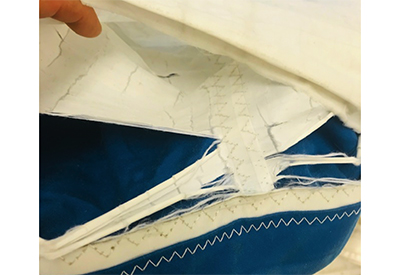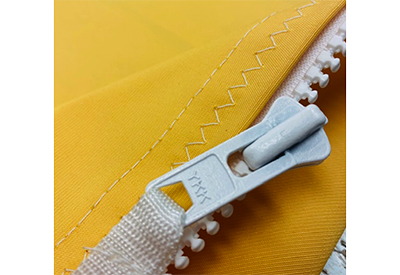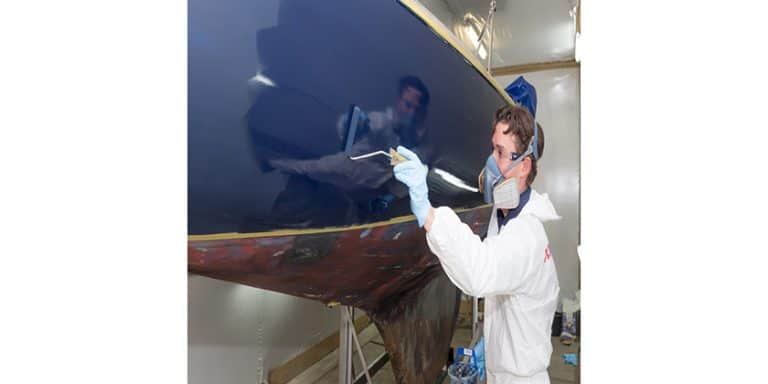Keven Talks Sails: Sail and Cover Cleaning

Oct 27, 2021
Last issue we covered most of the different materials used for protective covers, and these durable materials require special care. So, how often should you wash your sails and sail covers? As infrequently as possible! An aggressive and thorough sail washing can wash several seasons’ worth of use out of a sail; work on preventing soiling rather than relying on cleaning!
Sail cleaning is a service that is generally used to remove salt from the sailcloth and fittings. You can gently wash your own sails with a hose and a deck if you need to get the salt out. For fresh water use sails, cleaning is generally reserved to remove mildew or algae (mostly cruising laminates) or spot cleaning some really soiled spots from birds or bugs trying to make a home in your furled sail. To spot-clean the sailcloth, soak it well with water for an hour or so and use a solution of natural soap and a soft window brush or sponge.
As for cleaning solution, I personally use diluted Dr.Bronner’s Castile Oil soap from the health food store – it is a natural soap product that doesn’t weaken or yellow the cloth. Soap is a large polar molecule with a polar head and a hydrophobic lipid tail that traps dirt particles and removes them from the surface. Most household “soaps” are actually detergents that work to reduce surface tension and emulsify oils to help the cleaning. This surfactant action also removes some of the resins and finishes of the sailcloth that helps stabilize and protect it.
This sail was cleaned with a solution of laundry bleach that wasn’t rinsed away well enough. Not a great way to make your sail look better!
If you have a serious mildew issue on sailcloth or canvas, you can make up a laundry concentration solution of OxiClean and soak the affected areas in the bathtub until they start fading away. After the OxiClean, wash it with the soap solution and then make sure you spend at least an hour rinsing them in tap water afterwards to remove the solution afterwards. These oxidizers can degrade stitching and fibres in the cloth if left for too long. I don’t recommend bleach or other sodium hypochlorite solutions.
For Canvas and Sail cover cleaning, the makers of the cover materials have similar cleaning instructions as I recommend for sails.
1. Brush off loose dirt
2. Hose down or soak in the tub
3. Mild soap solution (Sunbrella recommends Woolite, but I would highly recommend the Dr.Bronners Soap)
4. Soft brush or sponge to gently scrub
5. Let soak some more
6. Rinse thoroughly
7. Air Dry
8. Retreat with 303 Fabric Guard to maintain water resistance (this is for Sunbrella type products)
 Soap and Water, and a fresh water rinse keeps your covers in great shape.
Soap and Water, and a fresh water rinse keeps your covers in great shape.
Some of the modern coated Acrylic products like Sunbrella Plus don’t want much scrubbing of the inside coated side of the material that helps in their waterproofing. This rubbing can damage that waterproof layer.
Remember, rinse them often with clean water and deal with spot soiling early so mould and mildew can’t get started. Be careful to store them dry to keep mildew at bay. It isn’t a good idea put them in the shed or garage where mice or squirrels will find them to be a tasty place to nest.
 Keven Piper, two-time Shark 24 World Champion, founded Hamilton, ON-based Bay Sails in 1998.
Keven Piper, two-time Shark 24 World Champion, founded Hamilton, ON-based Bay Sails in 1998.
email: baysails@gmail.com




























